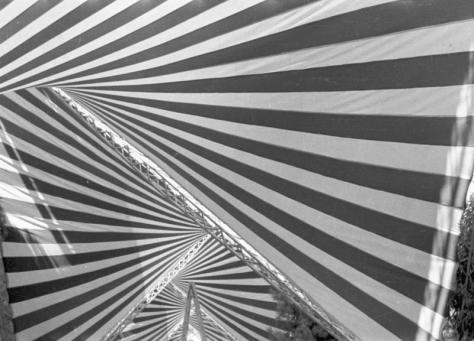b-inspired Museums-Galleries
Oskar Hansen
Open Form, MACBA
The role of contemporary art galleries and museums in addition to providing access to important art works and cultural artefacts is to introduce the general public to pivotal figures and influences that they might not be familiar with but who are nevertheless key to contemporary culture. Oskar Hansen (1922-2005) is such a figure.
With this exhibition Oskar Hansen, Open Form currently at MACBA (July 14th until January 6th 2015) we are presented with the work of this important Polish architect, urban planner, experimental film maker, artist and teacher. The impact of Oskar Hansen’s theories on a generation of artists and architects in post-war Poland and Europe continues to this day, Hansen regarded the arts as a form of social experimentation and his methods were adopted by an eclectic group of creatives. Framed within the research philosophy of MACBA which explores the relationship between architecture and other artistic practices, the exhibition traces the evolution of his open form theory from its origins in Hansen’s architectural projects to its implementation in the areas of cinema, multi-slide projections, visual games and performative practices of other artists.
-

Oskar Hansen during open-air exercises en Stoki, 1972 photo: Wiktor Gutt
-

Hansens' House in Szumin, 1967-70, photo: Jan Smaga - copyright Jan Smaga, courtsey of Foksal Gal2
Hansen was a member of the architects’ collective Team 10, the first critical voice to question the orthodoxy of the Athens Charter and the followers of Le Corbusier. Hansen presented his theory of the Open Form at the CIAM Otterlo 1959 which he further developed through projects exploring two distinct scales: from exhibition design to the ‘continuous linear system’ a draft layout for a decentralized netlike city that would extend respond to emerging requirements within Poland and other European territories, designed by Hansen at the same time that Constant Nieuwenhuys was developing New Babylon and Yona Friedman was producing proposals for Megastructures. Although the open form could be interpreted as a prescriptive model for urban planning, his main interest was to develop strategies of indeterminacy, flexibility and collective participation.
-

Oskar Hansen, Study of Continuous Linear System, courtesy Igor Hansen
More than a theory, however, Open Form was conceived as a tool for designing architectural projects. Its evolution and application to art education, film editing, visual games and performance arts practice led to a wide ranging series of experiments that broke down the artist/audience hierarchy and aimed to set individual subjectivity free through greater interactivity.
-

Polish Pavilion in Izmir, designed by Oskar Hansen and Lech Tomaszewski. Photo; Igor Hansen
Hansen created a powerful revolutionary educational system for the development of creative and relational faculties between the individual to the group. According to this system all individual actions must directed towards an overall response, the implication of the other or the group. The exhibition explores the importance of radical pedagogies at a time when the official education system is in crisis and the role that art can play as a provider of experiences and knowledge outside the classroom.
-

Students in Oskar Hansen's studio with apparatuses for Rhythm Exercises, copyright Warsaw Academy
The exhibition is divided between two spaces which reflect the work of Hansen in one area and his influence on the work of other artists in the other, featuring drawings, projections, sculptures, architectural models and re-editions of selected furniture which Hansen designed.
-

Oskar Hansen, 1986. Photo; Erazm Ciotek, copyright FOTONOVA / East News Poland
- From 11 July to 06 January
- MACBA
- Placa dels Angels, 1 08001
- www.macba.cat
- Curated by; Soledad Gutiérrez and Łukasz Ronduda in collaboraction with Aleksandra Kędziorek. Exhibition co-produced by the Warsaw's Museum of Modern Art with Barcelona's Museu d’Art Contemporani (MACBA), in asociation with the Museu de Arte Contemporânea de Serralves, Porto.
